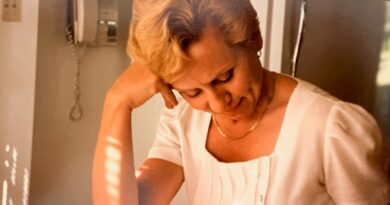The Jackalope
Peter Jackalus was a handful. He was brilliant, but suffered both from his small stature and a lack of self-confidence. He freely shared his challenging upbringing with us and its consequences, something he no doubt came to realize after years of constant therapy. The realization, however, did nothing to make him feel better about himself. A broken marriage to a woman he still loved didn’t help. Keeping him from periodic meltdowns during a project was always a challenge. His salvation was airplanes. He reveled in finding ways to solve compliance issues, or in remembering a neat trick around a problem. On airplanes he was nothing short of amazing.
I met Peter through Darryl “The Missing” Link (My partner, Brad, and I probably spent too much time giving people nicknames – and not ones they especially deserved). I had met Darryl at AIM Aviation while he was selling raw plastic materials and sheet stock. Darryl had moved on to a partnership with Terry Glass at aircraft parts dealer G&H Aerospace in Phoenix. They sold serviceable and re-conditioned parts, which were often used by airlines for interior reconfigurations. Through Terry, Darryl had met Peter. Peter was an engineering savant primarily because he had a photographic memory and 45 years of aerospace experience locked in his skull. But he was sorely lacking in people skills and combined with that inferiority complex it dogged him wherever he went. He partly made up for the deficiency with bravado and the confidence his photographic memory gave him. He also had the voice of God on his side, God being the FAA. Peter had delegated authority for an unheard-of seven different engineering disciplines from the FAA – mechanical systems, avionics, electrical, repairs & alterations, project management, flammability, and interior compliance. He had given back his eighth delegation for structures because “it was too stressful,” he said (It was ironic he would use that word, because a structures substantiation specialist was called a “Stress Engineer.”). But he could still ask for it whenever he wanted a special delegation on a certain project. On top of all that, he also was allowed to act as a DAR for specific projects. That essentially made him a one-man FAA certification crew.
Peter had worked for lots of airlines over the years, including Eastern and Hughes AirWest. He had a ton of airline contacts as a result. Darryl’s recommendation immediately gave us some credibility with him. We met Peter for dinner one night at Anthony’s Homeport in Des Moines, WA and got along. He needed an engineering company to work on his constant reconfiguration projects, and I sold him on our varied experience and expertise. It was a big deal for us at the time because we were essentially living hand-to-mouth and the Armor-X™ doors were still in development (see our post, The 9-11 Adventures of an Aerospace Startup). We ended up doing a bunch of projects with him that included work with Hawaiian Airlines, America West (now American Airlines), Continental Airlines (now United), Aloha and Boeing Capital Corp, Boeing’s aircraft leasing arm.
We had a couple of incidents that jump to mind when I think of Peter. The first was with America West. They had a VP of Engineering who was about 6’-5” and he loved to use his height to physically intimidate people. Peter was only about 5’-8” and with his complex it wasn’t too hard to get under his skin. One day the three of us were standing in a conference room, and the two of them were having a discussion about the status of a reconfiguration we were doing on AWA’s 737s. I was mostly standing there listening, taking a back seat to Peter since it was his contract. The VP was concerned about us missing schedule and making his planes late for induction into service. He leaned over poor Peter and shoved his index finger into Peter’s chest, poking while he made his point. I could tell right away Peter didn’t like it, but he was obviously intimidated and didn’t want to piss the guy off any more, so he took it.
When the guy finished with Peter he tried to start in on me. It was the same crap he had pushed on Peter, so I put my hand up and said, “I heard you the first time, and if you point that finger at me I’ll fucking break it off.” And I glared back at him.
He stopped, looked back at Peter and left. Peter was mortified. He thought I had blown the whole deal. But I said, “Peter, think about it for a minute. They’re committed to us. They have nowhere else to go. They have their own plane torn apart in their hanger, and they can’t finish it without us.”
It was a calculated risk on my part, but I sure wasn’t going to let this prick intimidate me. This was the old axiom of an airline hiring a subject matter expert to do a job for them, then trying to tell the expert how to do his business. That bit about the plane was one of the best counterattacks against aircraft maintenance and reconfiguration people I learned over the years – and I used it regularly: “Whose hangar is the plane in? Not mine. So, whose problem is that airplane? Not mine.”
It was always a great reset for any discussion with an airplane maintenance manager.
Peter also had a relationship with Bruce Beadell at Boeing Capital Corp. Bruce was a VP in charge of managing BCC’s fleet configurations. Unfortunately, Peter’s relationship with Bruce wasn’t what Peter thought it was, but Bruce was more than happy to take advantage of Peter’s misconception. Worse, neither Brad nor I knew the true relationship until it came time for Bruce to release payment for the last project we did for them, a 767-200 that was destined for Aerosvit Airlines out of Kiev, Ukraine. At the project conclusion we met Bruce and Peter at BCC in Renton. Bruce led Peter down the garden path while Peter innocently followed, with no clue of what awaited him. When the hammer dropped, Peter realized Bruce was not going to pay him for the work scope changes, which were fairly significant. He stammered around and Bruce just looked back at him. Brad and I had no standing because the contract was with Peter. So, we had to eat our own lunch right along side Peter. Brad and I were not happy. We had submitted work scope changes to Peter, who had given them to Bruce. But Peter never got actual approval, assuming his ‘relationship’ with Bruce was all he needed. I knew it was futile, but I told Bruce, “You realize we won’t be doing any more work for BCC. Those changes were dictated by your people or by the airplane not being per drawing.” He just sat there. We ended up eating about 120 grand.
There was some interesting drama that went along with doing the job in Ukraine. Two of our engineers, longtime professional friends of mine, Chris Schroeder and Ted Ross, were in Kiev taking care of the avionics, galley, video control center, electrical and stowage bin mods needed. The Ukrainians, while some of them knew English, had heavy accents and there was naturally something lost in translation on occasion. So, it was a challenge. Both Chris and Ted were there for an extended time. Ted worked for us until he was 82 years old, but at the time he must have been about 70. Well, unbeknownst to us, Ted was on heart medication. And while he was in Kiev he ran out, but he didn’t tell us. So, here we had a guy who was working long hours in a high stress situation in the Ukraine with a heart condition and no medicine. I think we found out when his wife, Jenni, called the office and told Kris that Ted was out of his medication. I freaked out a bit, thinking this was all we needed, for Ted to die while he was over there and then I would have to try and explain it to his wife. Getting a prescription drug into the Ukraine was virtually impossible unless you knew the ropes. We ended up getting the airline guys to help us usher it through customs, but it took several days to happen. I was holding my breath, hoping nothing would happen to Ted.
In the meantime, it wasn’t easy having status calls with him every day either. With the ten-hour time difference he would call from his hotel room after escaping the hangar, and you could tell this ordeal was hard on him. He started to lose his voice and when he did talk he coughed and sounded weak. I was nervous he would get really sick, or worse. In the end, he made it through and came home a couple weeks later. Much later I learned my fears were well-founded when another acquaintance of mine, famous Seattle sports promoter Bob Walsh, succumbed to a lung infection contracted while he was visiting the neighboring country of Georgia.
In the end, Peter Jackalus also didn’t fair as well as Ted. He died of a heart attack in 2007. It was a shock to us, and selfishly, we immediately thought of what it would do to TTF’s income stream. But, to me, it was also a sign of what I suddenly realized I had already known – we needed to stretch our legs, take on some risk and move on to bigger pastures. In its own way, I think the universe had aligned us with Peter to give us that kick.
Even though his projects never made all the money he promised, Peter was still important to TTF. He helped us increase and stabilize our engineering capabilities, and generate enough cash flow to finance the extra cost of certifying our Armor-X™ doors to the FAA’s moving regulatory targets. Without him, we probably would not have survived. We knew our real ticket was still cockpit doors, and ultimately we ended up outfitting some 400 airplanes with them, including all the carriers in Canada and the Caribbean, most of the U.S., and several in Europe and Japan.





Oh Tim, I so remember Peter. His first visit to the office. I did not know who he was but you were not there. It was early in the day. I offered him a seat in the entry to wait for you. We had run out of company provided coffee. So I offered a water. He said do you have any coffee. I said, “ummmmm no.” He went off. “Here I am in f*king Seattle and you have no coffee?” I was impressed. So I took time off the books and went out and bought him two cups and a treat. He was much tamed and grateful. I think he was pure gold and also feel the same about you and TTF. I love powerful men and am so grateful that I was employed by you.